The fate of Japan has been played out several times throughout its history, and the Genpei wars are one of them. At the end of the s. XII, two samurai clans, the Taira and the Minamoto They disputed the control of the country in a long and bloody civil war that had the entire empire on edge. But not all were battles and war exploits, there was also room for slightly less epic passages. For example, the one we are going to tell today is not exactly heroic, and it also has an anti-militarist message. It is the chronicle of one of the most famous duels in Japanese history, glossed over and over again in poems and epic songs, which had a somewhat different outcome than usual.
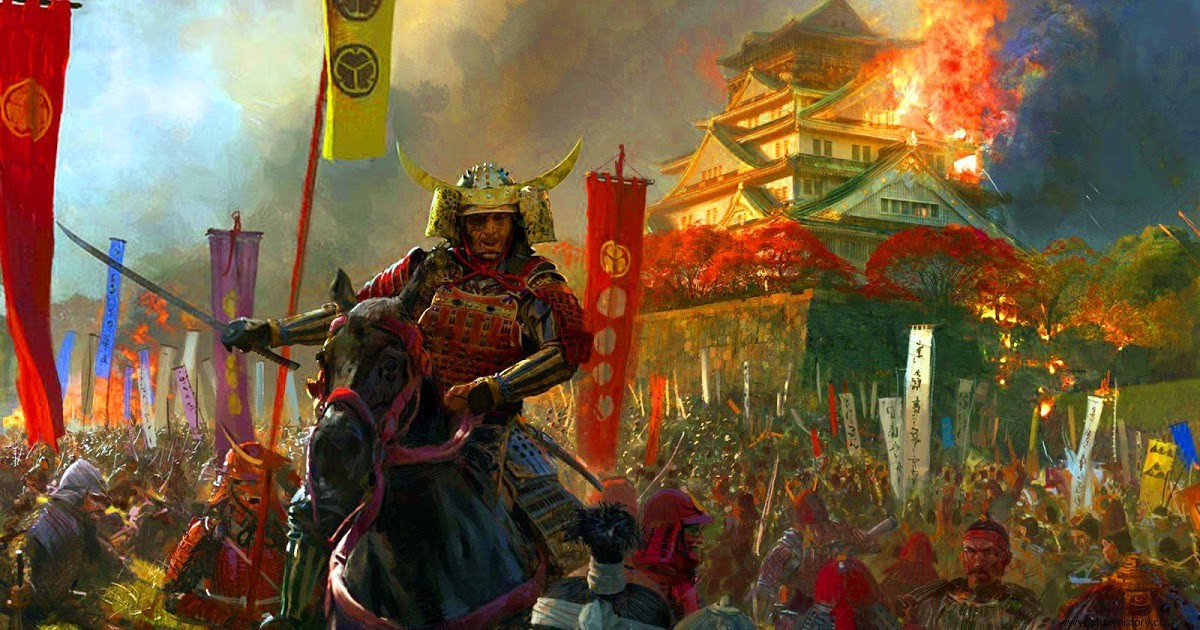
Let's put ourselves in situation. The Taira and Minamoto were, without a doubt, the largest and most powerful samurai clans that Japan had ever known. After centuries of rivalries and conflicts of various scales, the time for the final duel seemed to have arrived. The empire wasn't big enough for the two of them, and the Genpei wars were going to settle the matter once and for all. The conflict would end in 1185 with the final victory of the Minamoto and the rise of the first shogunate in the history of Japan, the one that Minamoto Yoritomo would establish in Kamakura.
But, to reach that definitive victory, it was going to take a few years of battles. One of the most famous was that of Ichi no Tani , where the duel that concerns us today took place. It was the year 1184, the height of the conflict. With the Taira army on the defensive, the Minamoto, under the command of the young general Yoshitsune They had won the initiative. Ichi no Tani Fortress it was one of the last Taira strongholds, practically impregnable. Located at the foot of steep cliffs and with the sea protecting its only open flank, there was no way to attack it. To take it, Yoshitsune had to launch his troops down the slope in a desperate cavalry charge, down almost vertical ravines. Crazy, but the move went well and he managed to surprise his enemies by attacking right where they would never have expected.
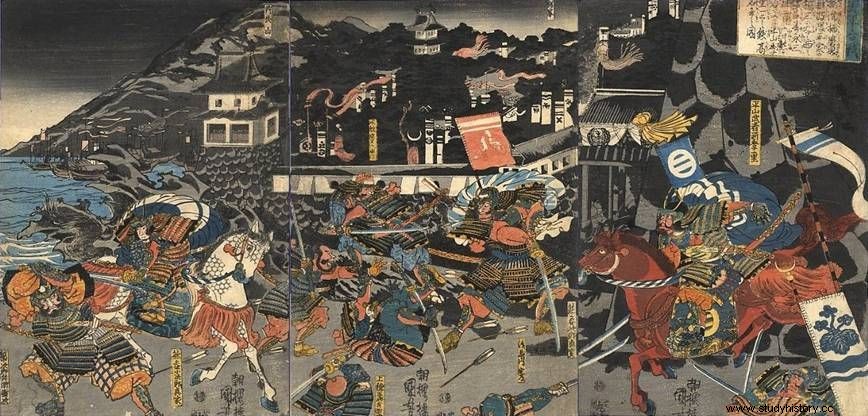
But the most remembered passage of this battle took place in the aftermath of it, when the battered remains of the Taira hosts were already in retreat. Dismasted by the Minamoto storm attack, hundreds of warriors covered in blood and mud huddled on the edge of the beach, trying in vain to board a boat in which they could get to safety. There were not enough ships to evacuate them all, and most of the Taira army was left on the shore, exhausted and defeated.
The battle-hardened Minamoto, like a pack of hungry wolves, pounced on them eager to get illustrious heads with which to cover themselves in glory. One of these soldiers in search of their extra share of fame was Kumagai Naozane , a rustic samurai of not too illustrious birth, coming from the distant province of Mushashi . Kumagai saw in this war the opportunity to make his name known throughout the empire. In those days, taking the head of an enemy commander was the fastest way for a warrior to gain recognition, promotion and honor. And Kumagai was a man of great ambitions.
In the distance, struggling against the waves, he spotted an enemy samurai clad in splendid, richly ornamented armor. At least he must have been a general; a good piece to take to the mouth. Just what Kumagai was looking for.
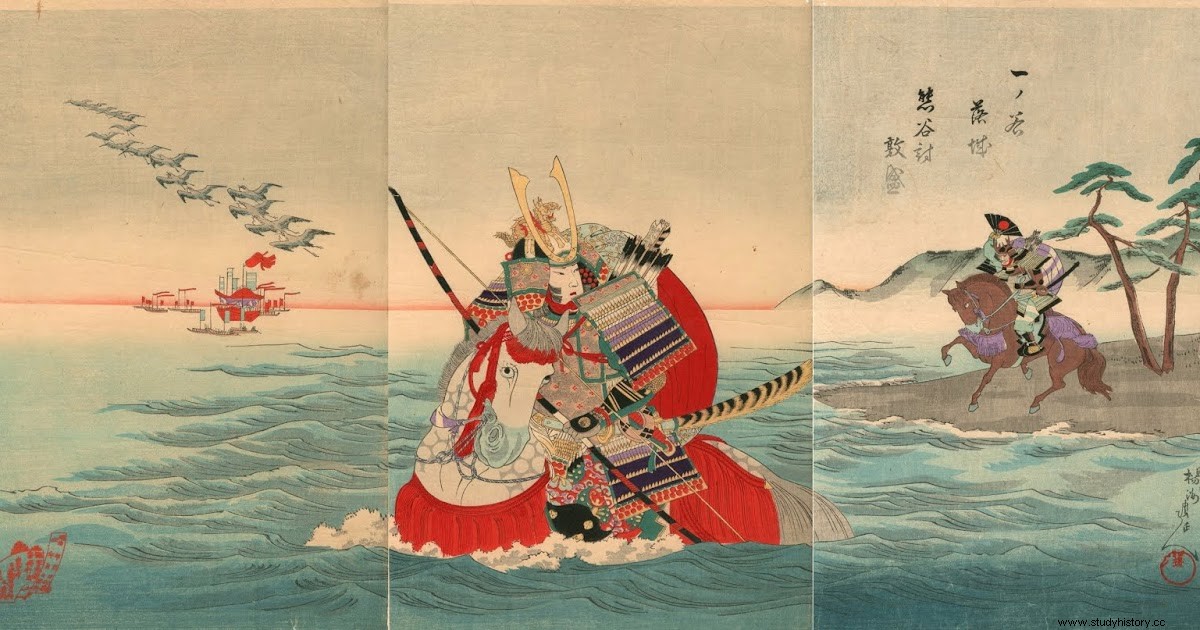
Before another could get ahead of him, he unsheathed his huge saber and shouted a challenge. Faced with such provocation, the Taira warrior could not but respond to the challenge. Abandoning his flight, he faced Kumagai without even bothering to announce his name or his lineage, as the etiquette of the time dictated. In full view of everyone, the two engaged in a unique duel on the sands of Ichi no Tani beach. . The lavishly armored Taira was no match for the ferocious Kumagai, an old soldier battle-hardened. A few thrusts were enough to break him. But, with the defeated enemy at his feet, just as he was about to deliver the coup de grâce, Kumagai stopped the sword petrified when he saw his face that was hidden under that helmet. The supposed Taira commander was nothing more than a boy of barely 17 years of age, with features so fine and delicate that they could be mistaken for those of a woman. His teeth, dyed black in Kyoto court fashion, revealed his aristocratic lineage. For the first time in his life, Kumagai hesitated. This situation was absurd. He hadn't gone to war to stain his steel with the blood of beardless boys. He himself had a son of a similar age. Given the doubts of his aggressor, the defeated young man exhorted him with a firm voice to finish what he had started.
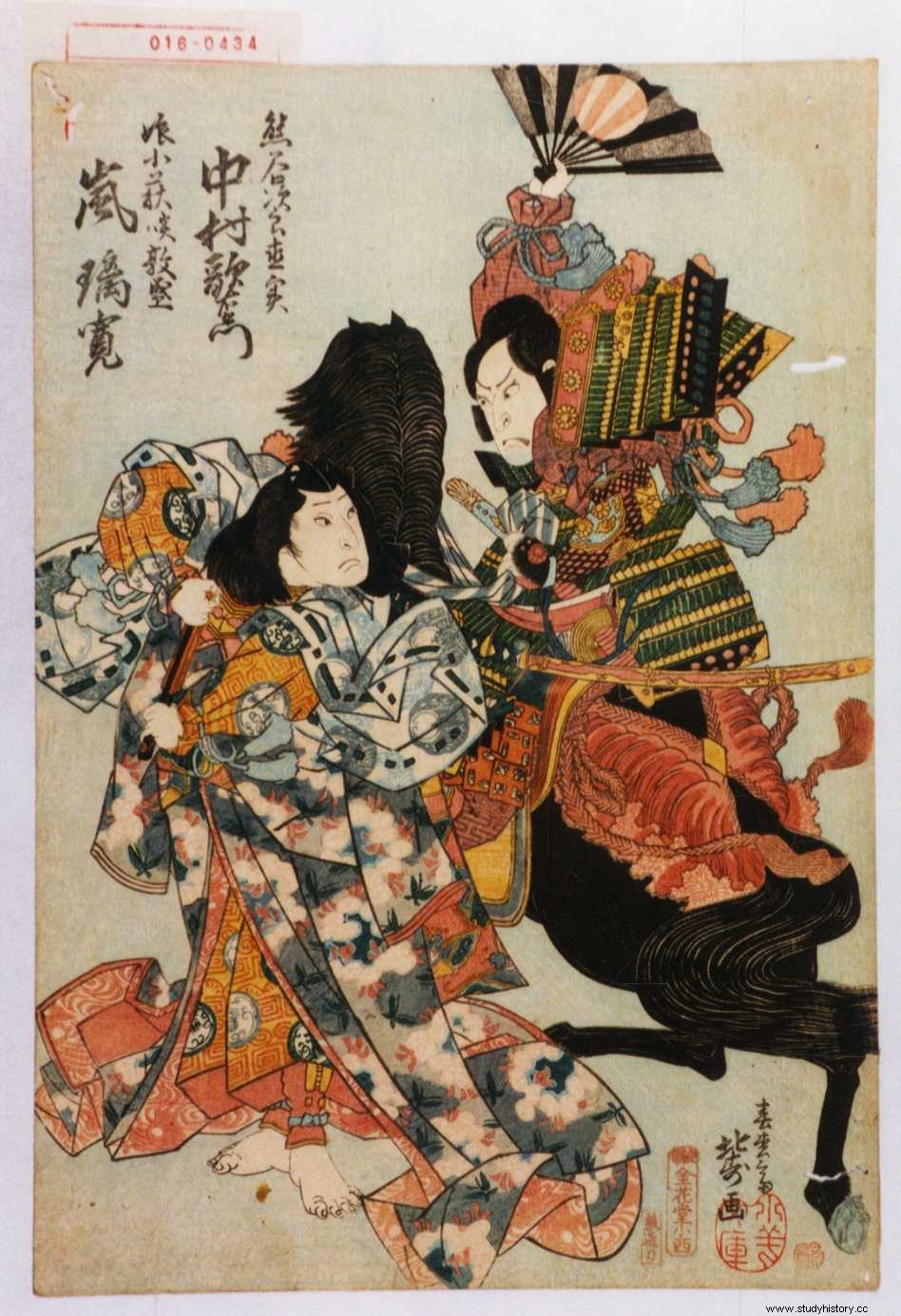
The hundreds of warriors fighting on the beach had their eyes fixed on Kumagai. At this point, there was no other way to resolve the issue. He averted his eyes and, mustering his strength, delivered the fatal blow. That head that had just been claimed was the bitterest victory of his life.
After the fight, they say that the brave Kumagai cried inconsolably. Perhaps overwhelmed by remorse, or perhaps disgusted by the absurd brutality of the war. Some even insinuate that he, in reality, had been captivated by the angelic beauty of that young man, whom circumstances had forced him to decapitate. There are many legends surrounding this infamous duel, and we will probably never know Kumagai's true motives. The only thing certain is that after that he decided to lay down the sword and renounce the world. He renounced his samurai status, shaved his head, and entered a Buddhist convent to become a monk. There he would spend the rest of his days, reciting the sutras in penance, oblivious to battles and worldly honors.
As it would later become known, the identity of the boy whose life he had taken was that of the young prince Taira Atsumori , and from then on that name would be forever linked to that of Kumagai himself. Songs of deeds like the famous Heike Monogatari They would immortalize this tragic episode by elevating it to the category of myth, and since then it has been a recurring motif for entire generations of Japanese artists and poets throughout the centuries. Now, strictly speaking, you have to take this story with a grain of salt. Just as we cannot take the Cantar del Mío Cid to the letter to understand the Spain of the Reconquest, the Heike Monogatari nor is it what is said to be a reliable historiographical source. But all things considered, one way or another Kumagai had finally gotten his way. He had managed to inscribe his name in the annals of History. Although, surely, not as he would have imagined.
Written by R. Ibarzabal, author of the book Chronicles of the Samurai. And as a good friend, in addition to being a regular contributor to the blog, he has had the detail of giving away a copy of his book (100% recommended) that we will raffle among all those who share or comment on this article.
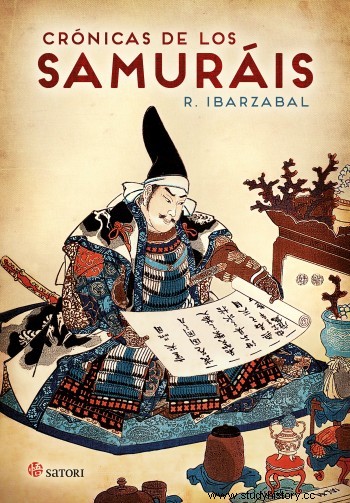
SOURCES :Heike Monogatari (The Song of Heike); anonymous (translation by R. Tani and C. Rubio). The Samurai:A Military History; S.Turnbull; Samurai Chronicles; R. Ibarzabal
